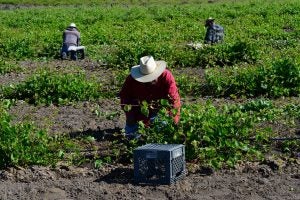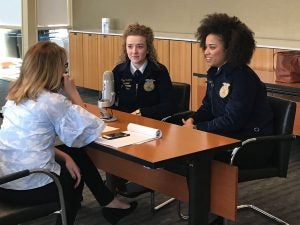In a society that is constantly changing and growing, diversity and inclusion have started to become common topics across many businesses and institutions. We hear about diversity requirements in the workplace, we say representation matters, and we say we care about equality — but what do these actually mean? Why do we push to diversify our institutions and be inclusive of others around us? Are these just trendy words with no real meaning?
When I see certain corporations or institutions push for diversity, their purpose for doing so in their messages hardly seems to extend further than “representation.” While this isn’t necessarily wrong, it doesn’t capture the truth in its entirety either. We need more than just a company photo with diverse people and the caption “Equality For All!”
Diversity isn’t a checklist, and inclusion does not mean to recruit marginalized communities to your institution and leave it there. Social issues surrounding diversity don’t go away when you suddenly hire diverse communities for their labor.
If at this point you’re not too sure what topics like diversity and inclusion even mean anymore, don’t worry, because I’m about to break down diversity in a social justice context, so you can understand how and why it applies to agriculture.
It is no secret the agriculture industry lacks diversity among its stakeholders. According to the the U.S. Department of Agriculture, as of 2019, 81 percent of farm operators in my home state of California are White. If you’ve ever stepped foot in California, you might know this statistic is not reflective of the overall population. But I don’t need a statistic to see that. As someone from one of the most agriculturally prolific and socially diverse areas in the nation, even I can see this just by looking at my classmates and coworkers.

When I think about this, I can’t help but to wonder about the opportunities in agriculture that marginalized communities miss out on. Opportunities in employment, academia, research, leadership development, food sovereignty, and environmental literacy.
When I was in FFA in high school, I noticed an obvious inequity in involvement in diversity, not just in our members but also among the teachers, alumni, and parents of FFA members as well. My chapter was made up of three high schools, and mine was the most urban and diverse school of the chapter. With that being said, it also had the least FFA involvement — myself being one of the exceptions.
I had an amazing time during in FFA and benefited so much from it. I gained interpersonal skills, leadership skills, and awards, and the organization was the one of the main driving factors for a lot of my scholarships entering college. FFA benefited me in so many ways, I only wish my peers, my community, and other diverse communities had that same opportunity.
When I asked them “why not join?” Many responses related to a lack of representation, lack of resources or opportunity due to socioeconomic class, or even stigmas surrounding people of color and the role they’ve historically played as laborers in agriculture.
For some it becomes personal when their families are farm workers.
More people like me (with my perspective, background, education, and vision) could be getting scholarships, learning valuable skills, or even pursuing post-secondary education with agriculture. But this opportunity is lost when we fail to include marginalized communities in these spaces.
When we work to diversify agriculture, we work to give marginalized communities opportunities at food literacy, scholarships, personal development, and so much more. Failure to do so only obstructs more opportunities from diverse communities that already struggle to establish and share their stories in agriculture.
With a little more than 1 percent of the nation’s people working in agriculture, we should be welcoming more people in the fold — especially when that 1 percent in itself is far from diverse. Marginalized communities tend to be hit hard with food insecurity, and our goals as agriculturists is to make food and agriculture accessible to all. We can do this by giving marginalized communities more opportunities in agriculture.

Yet, as noted earlier, it is not as simple as recruiting diverse people to work in agriculture or to enroll in agricultural education. They need to be given a reason to stay just like the rest of us — our passion.
High school agricultural education and FFA needs to be accessible to students who cannot afford to attend overnight trips, don’t have reliable transportation to and from FFA activities, or don’t have the housing or financial capacity for an SAE project. The curriculum needs to include information about the role marginalized communities played in FFA and agriculture. Educators need to build cultural and social awareness of diverse communities to better understand where their students are coming from. What good is having a diverse classroom or FFA program if your students struggle to participate?
Agricultural education in higher education needs some work, too, by incorporating more agriculture classes in general education so that non-agriculture majors are exposed to the field. It also needs to incorporate social science classes to its curriculum so that future leaders of the industry are aware of the impact their work has on society.
The workplace is not exempt from this either. In my experiences, the most diverse part of the workplace are the laborers and other blue-collar workers of agriculture. Only then are we widely represented.
To diversify agriculture and be inclusive does not mean to hire people for the sake of having diversity; this isn’t a treasure hunt. To diversify agriculture is to give opportunity to those who struggle to share their stories in agriculture.
If you’re a business owner looking to diversify your staff, ask yourself why. If you’re thinking it might make for a good public image, remember this is not a checklist or a coloring book we’re dealing with here, it’s human lives and opportunity.
Saul Reyes serves as the 2022 American Farmland Trust Agriculture Communications Intern at AGDAILY, with a focus on helping to amplify diversity and minority voices in agriculture. An FFA alum, Reyes is now a student at California State University-Chico and is double majoring in plant and soil science and multicultural and gender studies, while minoring in intersectional Chicanx/Latinx studies and public relations. He can be found on Twitter @sreyes710.





